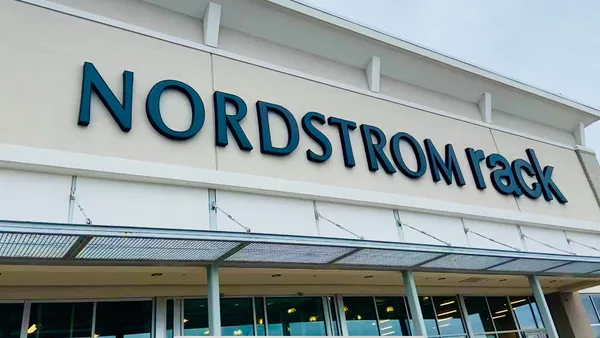Dive Brief:
-
Amazon's first 10 hours of Prime Day outpaced the first 10 hours last year, with Prime members buying "millions" of Alexa devices, according to the e-tailer. More than three quarters (76%) of Prime Day prices beat Black Friday prices, according to an email from deals site BestBlackFriday emailed to Retail Dive. Sales will continue until 3 a.m. Eastern time.
-
The company acknowledged it had a rough start, with many shoppers unable to make purchases because of site problems, encountering error messages with cute puppies instead.
-
In an email from Amazon sent to Retail Dive, the company provided feedback from its third party marketplaces sellers, and quotes saying they'd also had a stellar day. Many, like Amazon itself, said that Prime Day sales of some items surpassed last year's event.
Dive Insight:
Prime Day, aside from being a lucrative sales day for Amazon, gives the e-commerce giant a chance to wrestle with system weaknesses ahead of the big dance: the holidays.
This year Amazon's desktop and mobile websites both experienced major glitches on Monday, making it difficult for customers to make purchases and sparking a social media storm in response.
#PrimeDay2018 these are my favorite so far pic.twitter.com/6GVL7IYi20
— Priscilla (@PrisReynaga) July 16, 2018
The issue was "especially problematic" considering that many of the Prime deals were only available during set windows of time, noted GlobalData Retail Managing Director Neil Saunders, in comments emailed to Retail Dive. "There is no doubt that this will erode sales and deter some customers from buying," he said. "The good news is that after extensive marketing and hype, Amazon has clearly pushed demand for its Prime extravaganza to an all-time high — maybe even more than it anticipated."
A new broadcast effort from Amazon helped boost the sales event. In television spots, hosts chatted up deals and shoppers could buy the featured products in real time — a peek, perhaps, into Amazon's televised shopping ambitions. The format is familiar to anyone who watches fare from the likes of QVC and Evine — the latter said to be in Amazon's acquisition sights.
Retailers beyond Amazon have made big plays on Prime Day, and even more this year held their own Prime Day events. Target and eBay were among them, with both touting the fact that no membership, unlike Amazon's sale, is required.
To some degree, retailers benefit from the comparison shopping consumers do during Prime Day and throughout the year. Narrativ, a media technology company that works with publishers and brands, found that 63% of shoppers it surveyed actively compare prices at other retailers when shopping on Amazon. Meanwhile, 40% of consumers say they are more likely to buy an item from Amazon if it costs the same elsewhere and just 30% of consumers say they trust that Amazon has the best prices.
But retailers trying to cash in on Prime Day also have to compete with Amazon's discounts. The average discount during Prime day was 38% off. Amazon-branded and Alexa-connected products averaged discounts of 36%, while non-Amazon products averaged 38%. Toys & Games (51% off), office (48%), and personal care (40%) were among the categories with some of the deepest early discounts, according to Market Track.
While retailers like Target try to entice customers with their lack of membership fees, the base of Amazon's Prime members in the U.S. is slowing, according to research from Consumer Intelligence Research Partners emailed to Retail Dive. Membership in the $120-per-year program, a requirement to shop during the big sale, grew 12% in the past 12 months, down from 35% during the previous 12 months and around 50% for each of the two years before that, according to the report. CIRP pegs Amazon's current U.S. Prime membership at 95 million. The company recently said it had 100 million Prime members worldwide.
Still, Prime member spending has gradually increased, CIRP also said. A Prime member spends an average of $1,400 per year at Amazon, compared to $600 for a non-member.













